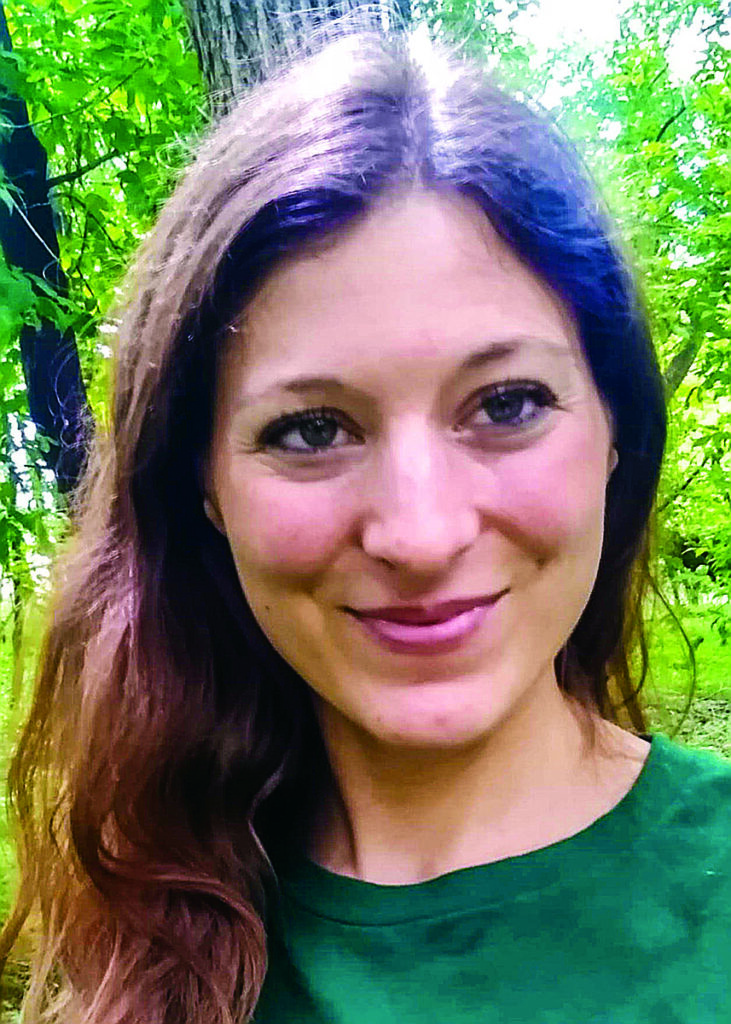
Sustainability Coordinator, Crystal Rayamajhi
Nancy Edmonds Hanson
Moorhead has again achieved the top level in Minnesota’s GreenStep Cities program, Crystal Rayamajhi announced at the recent meeting of the Moorhead City Council.
Rayamajhi, who was named the city’s sustainability coordinator in 2022, told council members that Moorhead maintained its status at the highest level of the voluntary program through a number of improvements during the past year. Among the 17 areas of improvement currently being tracked are reduction of energy use in city buildings, the addition of private energy-generating sites, and the increase to 60% of streetlights equipped with LED.
The Green Steps program was developed 13 years ago by a coalition of organizations committed to sustainability and quality-of-life goals. The 2008 Legislature directed the Pollution Control Agency and Department of Commerce and Clean Energy Resource Teams to recommend actions cities could take voluntarily. It led to a collaboration of the University of Minnesota, businesses and state agency to create the GreenStep Cities program, which was launched in 2010.
The program offers a menu of 29 “best practices,” with 175 actions from which the 146 participating cities can choose, focusing on cost savings, energy use reduction and civic innovation. Moorhead joined the program in 2017. By last year, it had completed the initial steps, which include building support in the community, implementing from four to eight best practices, and beginning to pursue and document local actions.
Topic areas include transportation, environmental management, resilient economic and community development, The last category includes development of green businesses, renewable energy, local food sources and climate adaptation and resilience in the face of extreme weather and changing climatic conditions.
Rayamajhi shared highlights of a presentation she recently gave to the League of Minnesota Cities highlighting some of the sustainability actions taken by agencies, organizations and residents of Moorhead.
One is the Food Forest at M.B. Johnson Park on the north side. In 2021, 70 volunteers, mostly from River Keepers, planted fruit trees and shrubs at the park. They’re doing well, she reported, and some are already beginning to provide honey berries and Juneberries that residents are welcome to harvest. “It takes most of them a few years to start to produce,” she cautioned. “We have to be patient with the trees.”
She described pollinator gardens that have been established at Arrowhead, Bennett and Queens Parks, planted by children led by the local Green Corps volunteer and Native American liaisons. Other pollinator gardens have been planted by adult volunteers in Southside Regional and M.B. Johnson parks. “We’ve planted more than 4,000 native prairie plants and pollinators,” she reported. She cited a side benefit of the plantings: “After volunteers have gotten involved with these projects, they take what they’ve learned and bring it home with them – the multiplier effect.”
Other volunteer efforts have been organized through the Parks and Recreation Department, she pointed out. Organizations and individuals can now “adopt” a park, flower bed or pond, keeping it clean and healthy.
Removal of the noxious non-native weed buckthorn has also made inroads in forested areas, with more than an acre of the weed – the understory of the riverside forest – elimanted or controlled by volunteers between Gooseberry and M.B. Johnson parks. Audubon Great Plains and the city forestry department cut down or pruned back the largest plants. “Buckthorn is an invasive species. It’s not native here,” Rayamajhi explained. “Over time, it completely eliminates plant diversity in the understory. Eliminating it helps restore the natural diversity of native plant and animal life.”


